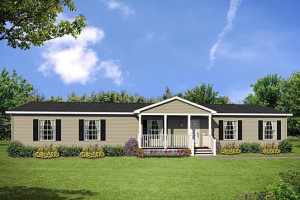Tips on How to Gain Excellent Insulation for the Modular Home Basement
 Considering that modular home basement walls account for up to 25% of heat loss, you realize how important basement wall insulation really is. Whether your basement will be transformed into a recreation room or used for storage, it is vitally important that it is properly insulated to make your entire living space comfortable and energy efficient.
Considering that modular home basement walls account for up to 25% of heat loss, you realize how important basement wall insulation really is. Whether your basement will be transformed into a recreation room or used for storage, it is vitally important that it is properly insulated to make your entire living space comfortable and energy efficient.
Here are some tips that will help you ensure that your modular home basement will get utmost insulation.
Check Local Codes on How to Insulate the Modular Home
Before planning and buying materials for your basement insulation, check with a local house inspector or your building codes office to determine if you will require any special materials or techniques to install your basement insulation. Some codes require that insulation in basements be covered by a wall for fire safety. Determine the laws to get the right information about what type of insulation you need.
Adjusting for Climate
If you are insulating a cold climate modular home basement, install a vapor barrier on the heated side or within the insulation. If you live in a warm climate, doing so may not be necessary, although in some areas it may be suggested to use a vapor barrier on the outside surface.
Fiberglass Batting for Insulating Tight Places
Exposed joists in modular home’s basement needs to be insulated. Use fiberglass insulation to fill these holes where the wall and the floor meet. Snugly place the fiberglass batting here, but not wrap it so tightly that it is compressed. Wear a face mask, gloves, and long-sleeved protective clothing when working with fiberglass.
Use Different Types of Insulation for Modular Home Basement
Either use higher density insulation in places where more cold or hot air will enter, such as exterior walls and cathedral ceilings. There are 4 main kinds of insulation that modular home needs and all of which are available in various densities. Rolls, batts and blankets are combined to form a flexible insulation specifically useful for wall studs and floor and attic joists. Loose fill insulation comes in the form of loose fibers or pellets, installed using special pneumatic equipment. Rigid foam insulation is a very effective in places with space limitations, though it is also more expensive. And lastly the foam-in-place insulation which is installed by blowing it into the walls, very effective in cracks around door and window frames.
Plan accordingly and use different types and densities to complete the insulation in your basement.
Recessed Lighting and Insulation Compatibility
A large amount of heat can be lost through recessed lighting fixtures in modular home basement walls. Be very careful to place insulation at the recommended spacing to avoid a fire hazard. Insulation suitable for contact with lighting will be marked IC for direct contact with insulation.
Use these tips to successfully plan and install insulation in your modular home basement so that you will not only feel more comfortable in your home, but also experience a great cost savings for just a little investment of your time and money.
In case you still have question about modular homes and insulated precast foundation, you may contact Legendary Homes Inc in Jackson, Michigan. A representative will be happy to assist you. Meanwhile you can check our modular home price sheets by signing up to our blog


